Get ready to explore the vibrant taste of Vietnam. This article is all about sharing the joy of culinary adventures for travelers. We’ll take you through traditional dishes, street food delights, food tours, local markets, dietary options, cultural insights, and even some tasty Vietnamese recipes to try.
See more: Embracing Vietnamese Cuisine
The Taste of Vietnam: A Culinary Journey
Vietnam offers an exciting culinary adventure for travelers, making it an excellent place to explore the diverse and flavorful world of Vietnamese cuisine.
Understanding Vietnamese Cuisine
Vietnamese cuisine is a delightful mosaic of flavors deeply rooted in the country’s history and culture. It represents a beautiful fusion of tastes, textures, and traditions. This cuisine has been influenced by Chinese and French culinary practices but maintains its distinct identity, offering a unique taste experience.
Vietnamese dishes are known for their freshness, a limited use of oil, and an abundance of herbs and vegetables. The combination of sweet, sour, salty, and spicy flavors creates dishes that are vibrant and satisfying.
Introduction to Traditional Dishes and Their Regional Variations:Traditional Vietnamese dishes can vary greatly from one region to another, reflecting the diversity of the country. In the northern part, you’ll discover “Pho,” a beloved noodle soup made with tender slices of beef or chicken and a flavorful, clear broth. As you move south, “Bun Cha” takes the spotlight, a dish featuring grilled pork patties and vermicelli noodles served with a zesty dipping sauce. In the southern region, “Cao Lau” stands out, a unique blend of noodles, roast pork, and fresh herbs with a touch of broth.
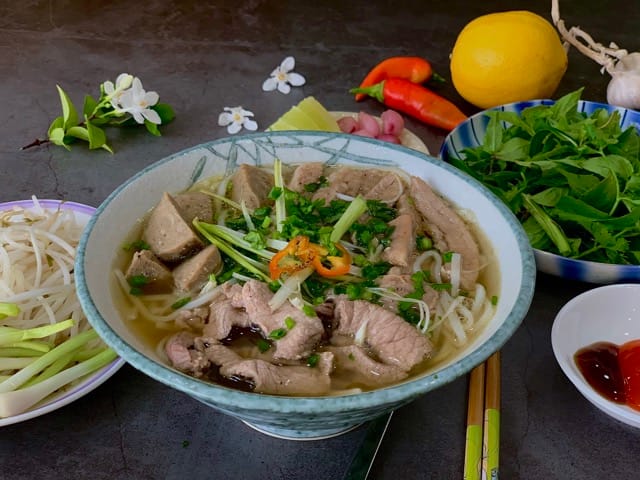
These regional variations are a product of local ingredients, climate, and cultural heritage, offering travelers a unique opportunity to explore the distinct tastes of each area.
Street Food Wonders
Vietnamese street food is a sensory journey that introduces you to the heart and soul of the local culture. The bustling streets of Vietnam are filled with food stalls and vendors, offering not only delicious but also budget-friendly treats.
One of the most iconic street foods is “Banh Mi,” a fusion of French baguette and Vietnamese flavors. It’s typically filled with ingredients like grilled pork, pate, herbs, and various condiments. To savor the best “Banh Mi” experience, explore the streets of Hoi An or Ho Chi Minh City.
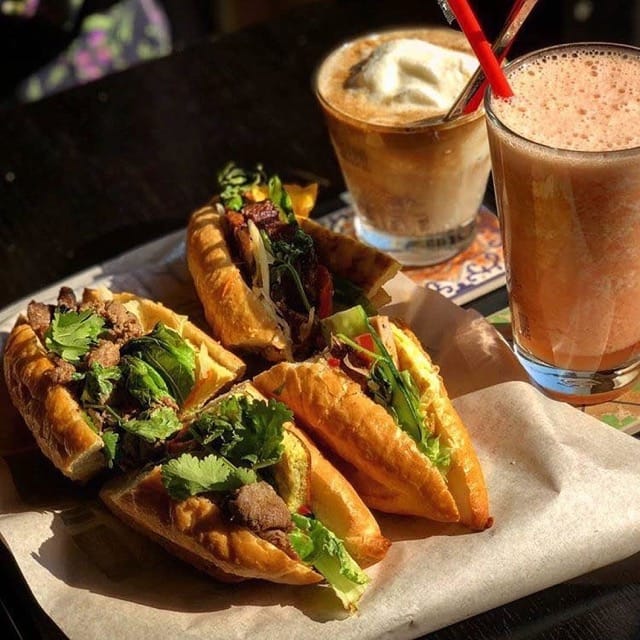
Another must-try is “Banh Xeo,” a savory rice pancake filled with shrimp, pork, and bean sprouts. The bustling markets in Da Nang are renowned for their outstanding “Banh Xeo.”
For a truly authentic street food adventure, consider following the locals. They often lead you to hidden gems celebrated for their exceptional flavors. Whether it’s a Pho vendor in Hanoi’s Old Quarter or a “Com Tam” (broken rice) stall in Saigon, mingling with the locals can open doors to some of the most memorable culinary experiences.
Vietnamese street food isn’t just about the food itself; it’s an experience, a journey into the heart of Vietnamese culture, filled with mouthwatering dishes and friendly interactions.
Explore the Finest Vietnamese Candy: A Delectable Journey through Sweet Memories in Vietnam.
Immersive Culinary Experiences
Food Tours and Cooking Classes
- Choosing the Right Food Tour or Cooking Class: Vietnam boasts a variety of food tours and cooking classes. Finding the perfect one is all part of the fun. Consider your food interests, budget, and location. Whether you’re into street food, market visits, or mastering Vietnamese recipes, there’s an experience waiting for you.

- Personal Experiences and Recommendations: For a personalized touch, seek advice from fellow travelers. Online forums and review sites often feature insightful recommendations and stories from those who’ve enjoyed these experiences.
- How to Book Food Tours and Cooking Classes in Vietnam: Booking is simple. Many operators and cooking schools offer online reservations. Alternatively, your accommodation can help arrange these experiences. Don’t forget to check class sizes, language options, and dietary considerations when booking.
Taste of Vietnam Festival
During Tet, families gather to enjoy special dishes like “Banh Chung” (sticky rice cake) and “Mut” (candied fruits), which symbolize luck and prosperity. Similarly, Double Fifth Day, known as Tet Doan Ngo, features traditional treats like “Banh U” (pyramidal rice cakes) and “Che Troi Nuoc” (glutinous rice dumplings in sweet ginger soup). The Taste of Vietnam Festival pays homage to these culinary traditions, offering a taste of the festive spirit year-round.
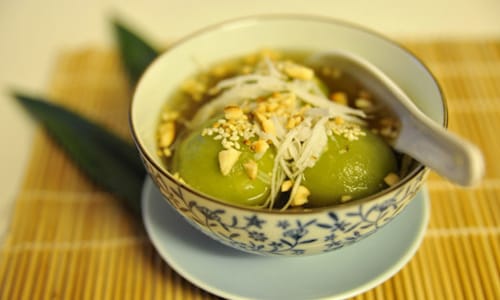
Sourcing Local Flavors
Exploring Local Ingredients and Markets
- A Guide to Popular Markets in Vietnam: Vietnam is a haven for markets that showcase the country’s culinary treasures. From the bustling Ben Thanh Market in Ho Chi Minh City to the historic Dong Xuan Market in Hanoi, we’ll provide you with a guide to some of the most popular and vibrant markets in Vietnam. These markets are not only places to shop but also cultural experiences where you can witness daily life and sample local delicacies.
- Locating Fresh Produce, Herbs, and Spices: Vietnamese cuisine’s hallmark is the use of fresh, aromatic ingredients. We’ll take you through the process of finding fresh produce, herbs, and spices at these markets. You’ll discover the vibrant colors and rich scents that are the heart of Vietnamese cooking.
- Tips for Navigating and Shopping in Vietnamese Markets: Shopping in local markets can be an adventure in itself. We’ll provide practical tips on how to navigate these bustling places, haggle for a good deal, and interact with vendors. Understanding market etiquette can enhance your shopping experience while respecting the local culture.
Experience the ultimate treat with divine Vietnamese cream puffs, savoring an exquisite culinary delight.
Taste of Vietnamese Coffee
- The Art of Vietnamese Coffee : Vietnamese coffee is not just a beverage; it’s an art form deeply ingrained in the culture. It’s about savoring the moment, enjoying the flavors, and embracing the tradition. Coffee holds a special place in Vietnamese daily life, and its significance goes beyond its caffeine content. It’s a means of connection, socializing, and relaxation.
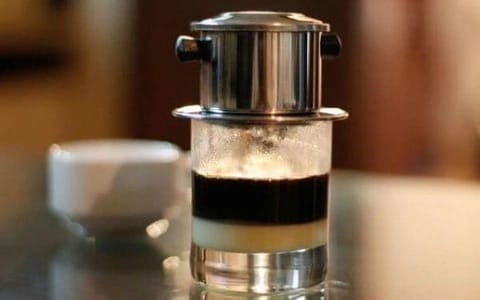
- Where to Enjoy the Best Vietnamese Coffee: In Vietnam, you’ll find coffee everywhere, from street-side stalls to cafes with rich aromas. While it’s widespread, the secret to finding the best Vietnamese coffee lies in local insights. Strike up a conversation with locals, ask for reviews and recommendations, and be open to trying different venues. The true gems are often hidden and known to the locals.
Food Safety and Dietary Considerations
Exploring the “Taste of Vietnam” should be a delicious and safe experience. In this section, we will cover “Ensuring Food Safety in Vietnam” and how to navigate “Catering to Dietary Preferences and Restrictions.”
Ensuring Food Safety in Vietnam
- Tips for Safe and Hygienic Dining in Vietnam: While Vietnamese cuisine is renowned for its flavors, maintaining food safety is crucial. We’ll provide you with essential tips for safe and hygienic dining in Vietnam. This includes insights into clean establishments, cooking standards, and hygiene practices that you can look out for during your culinary adventure.
- What to Watch Out for to Avoid Food-Related Illnesses: To ensure your journey is not marred by food-related illnesses, we’ll guide you on what to watch out for. Recognizing potential risks, such as unclean water, undercooked food, or improper food handling, can help you make informed choices and safeguard your health while enjoying Vietnamese dishes.
Catering to Dietary Preferences and Restrictions
- Navigating Vegetarian and Vegan Options: For travelers with dietary preferences or restrictions, finding suitable options in Vietnam is entirely possible. We’ll help you navigate the culinary landscape for vegetarian and vegan choices. You’ll discover a variety of plant-based dishes and venues that cater to these dietary preferences.
- Adapting to Specific Dietary Requirements in Vietnam: If you have specific dietary requirements, whether due to allergies or medical conditions, we’ll provide guidance on adapting to these needs in Vietnam. You’ll learn about communication strategies with restaurants and how to identify suitable dishes, ensuring that you enjoy your meals while adhering to your dietary restrictions.
The Cultural Context of Vietnamese Cuisine
TheHeritage of Vietnamese Cuisine
Cultural Overview of Vietnamese Food
Vietnamese cuisine is closely linked to the nation’s tropical climate, allowing for the abundant growth of fresh vegetables and herbs. These greens are fundamental to many Vietnamese dishes.

Regional Influence on Taste of Vietnam
Northern Vietnamese cuisine is characterized by its historical simplicity and subtle flavors. Dishes like Hanoi Pho, Hanoi bun cha, bun thang, spring rolls, and frozen meat are emblematic of the Northern culinary tradition. This cuisine reflects the region’s historical depth and the influence of various dynasties.
The Central region, marked by a sunny and breezy climate, is known for its spicier and somewhat saltier cuisine. Dishes from this area emphasize presentation and distinctive names. Hue, often regarded as the birthplace of Central cuisine, offers dishes like Cao Lau, mussel rice, Hue beef noodle soup, banh beo, tapioca cake, banh xeo, banh dap, and spring rolls. The sophistication of Central cuisine mirrors the cultural diversity of the region.
Southern Vietnamese cuisine is characterized by its simplicity, variety, and a touch of sweetness. Influences from Chinese, Thai, and other culinary traditions are evident, resulting in dishes that often feature a hint of sweetness from vegetables and the richness of coconut water. Iconic Southern dishes include spring rolls, vermicelli with fish sauce, Nam Vang noodles, banh it, beef cakes, banana sweet soup, and more. This diverse culinary landscape reflects the cultural complexity of the South.
Embark on a culinary adventure and delight your palate with Vietnamese ham, a must-try treat for travelers.
Dining Etiquette and Traditions
The use of chopsticks is a significant and respectful part of Vietnamese dining culture. It underscores cultural heritage and demonstrates reverence for traditional customs.
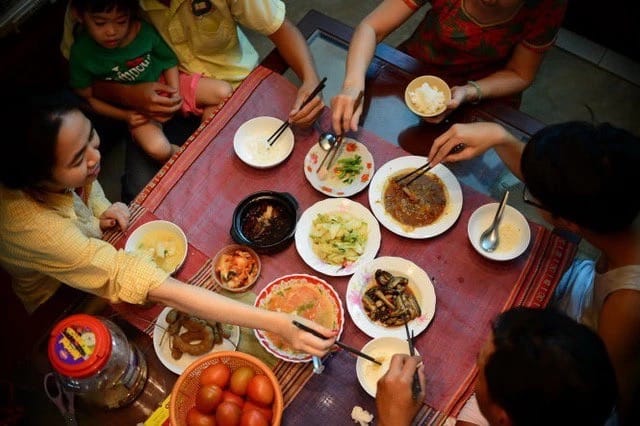
Another important facet of Vietnamese dining culture is the practice of sharing meals. The act of inviting others to join a meal is a warm and welcoming gesture deeply rooted in Vietnamese hospitality. It embodies a sense of togetherness and unity that is integral to the culture.
Telling stories and sharing experiences during meals is a cherished tradition. This practice enhances the cultural value of the meal and strengthens social bonds, emphasizing the importance of communication and camaraderie during dining occasions.
Conclusion
The “Taste of Vietnam” is a captivating journey into a culinary wonderland. Its flavors, history, and cultural significance make it a remarkable adventure. Embrace Vietnamese cuisine and culture during your travels, for it is an exploration that transcends the palate and reveals the heart of a diverse and vibrant nation.


Related Posts
Vietnam Motorbike Adventures: The Ultimate Guide
With its breathtaking landscapes, rich cultural heritage, and vibrant local experiences, Vietnam offers an unforgettable adventure for motorbike enthusiasts. Discover hidden gems, meet friendly locals, and create lasting memories as you explore diverse terrains and immerse yourself in the heart of Vietnam. Why Choose a Motorbike Adventure in Vietnam? Freedom and Flexibility If you love […]
Experience the Living Conditions in Cu Chi Tunnels: Unbelievable!
Cu Chi Tunnels served as the living quarters for soldiers and civilians during Vietnam’s resistance against France and America. Today, this remarkable site stands as a symbol of perseverance, determination, and resilience during one of the most challenging periods in Vietnamese history. Discover the living conditions in Cu Chi Tunnels with Joy Journeys in the […]
Vietnam Fish Cake: A Culinary Delight
Vietnam fish cake, known for its delicious and diverse flavors, is a favorite among tourists looking to explore authentic Vietnamese cuisine. From the crispy, golden-brown texture of fried fish cakes to the fragrant, herb-infused variations found in regional specialties, these savory delights offer a true taste of Vietnam. In this article, we will take you […]